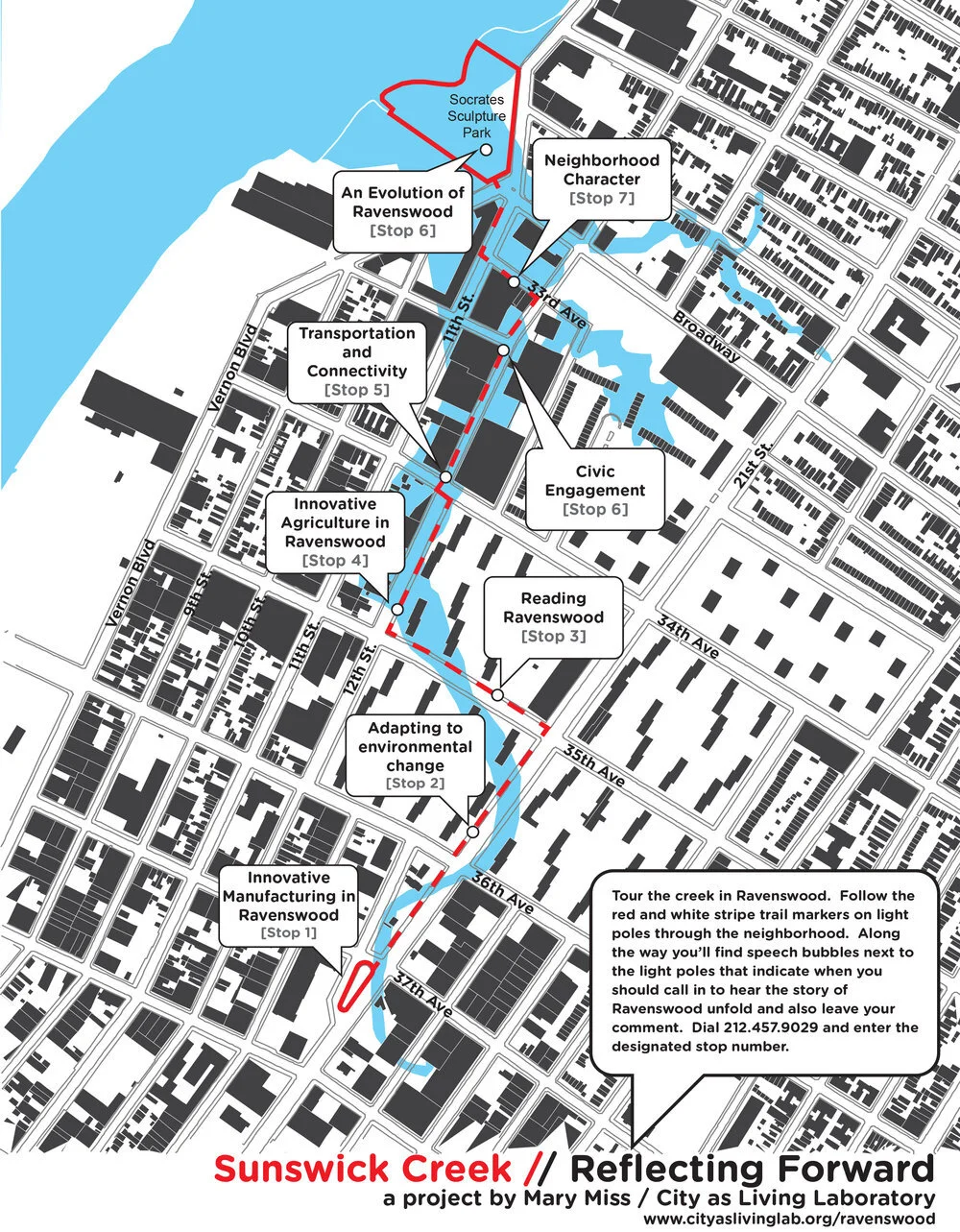Architect Joyce Hwang and environmental engineer Prathap Ramamurthy used heat imaging technology to decode environmental conditions such as heat loss and retention in rent-controlled buildings in Chinatown. The walk was followed by a forum with community, activists about the challenges and promise of Community Land Trusts to preserve low-cost housing and to reflect on how the arts could be a catalyst to reveal the benefits of strategic renovations to energy conservation and livability.
Read MoreA WaterMarks WALK led by engineer, Paige Peters and artist, Colin Matthes led a walk along National Avenue and to Paliafito Eco-Arts Park.
Leading a walk from Acosta Middle School to the School of Freshwater Sciences by way of Washington Street, South Ploycn Street and Greenfield Avenue, Melanies Ariens and Carmen Aguilar met with students, teachers and community members to facilitate a multifaceted exploration of the unseen green infrastructure in the neighborhood and its impact on water systems management.
Read MoreIn the heavily reshaped environ of Walker's Square, "Hidden Water Stories" explored the disjuncture between the historic natural water pathways and the legacy of industry and infrastructure on our current perceptions. Beginning with buried water in the small community park, following storm drainage to a man-made canal sculpted from a land-filled Menomonee Valley, we circled the massive I-94 interchange considering both environmental and social impacts on the neighborhood.
Read MoreThe Urban Garden: A walk led by artist, Kanene Holder and Biologist, Paul Mankiewicz explored how people interact with nature and questioned where and if urban planning has succeeded or failed to accommodate natural ecosystems.
Read MoreFood, Culture and the Urban Environment: Artist Miguel Luciano and environmental scientist Daniel Carrion led a walk to bring awareness on the complex relationships between migration, housing, food insecurity and pollution in West Harlem.
Read MoreThis WALK explored the qualities that make public spaces inviting and unwelcoming. We examined the pleasures and benefits of public space by looking at the Upper West Side and the populations it serves through the perspectives of three New Yorkers who significantly shaped public space in the city: Frederick Law Olmsted, Robert Moses, and Jane Jacobs. From Central Park West to Riverside Park, the group considered habitat, migration, and the relationship between social and natural ecology, addressing how the nature of public spaces affects people's sense of belonging.
Read MoreThis walk with artist Marshall Reese and anthropologist Ben Orlove focused on landscape and the passage of time using techniques of deep listening pioneered by composer Pauline Olveros.
Read MoreWalking in a circle from 228th Street back to 228th Street, artist Mary Mattingly and scientist Sabine Marx describe cycles of historic and future visions, building and preservation projects that highlight New York's resources.
Read MoreHart creates interactive installations, including the recent “Oracle of Epicure,” based on her family history, part of the Crossing Brooklyn exhibit at the Brooklyn Museum. She has exhibited at The Drawing Center, NY; University of Illinois, Urbana-Champaign, IL; and Seattle Art Museum’s Olympic Sculpture Park, Seattle, WA among others.
Conley is on the faculty of New York University. He holds faculty appointments in the Department of Sociology, in the School of Medicine and the Wagner School of Public Service. His book “Honky” is both an autobiography and a treatise on the social construction of race and class in New York City during the 1970s and 1980s.
In the fall of 2014, City as Living Laboratory (CaLL) continued its BROADWAY: 1000 Steps project with a series of walking dialogues between artists and scientists. CaLL began conducting walks along Broadway in 2011 at the invitation of the Municipal Art Society. Building on earlier walks that have spanned the 18-mile length of Broadway, these WALKS focused on three hubs of the avenue: 125th Street in Harlem, 34th Street in The Garment District, and Chinatown. The artist/scientist teams discussed, between themselves and the public, a variety of environmental challenges along the Broadway corridor, with a particular focus on surrounding neighborhoods.
CALL co-organized a three-part WALK for Marfa Dialogues/St. Louis (MD/STL) which started at the controversial 30-acre former public housing site, Pruitt-Igoe, demolished 40 years ago.
Read MoreMary Miss/ City As Living Laboratory and renowned game designer Josh DeBonis teamed up to create an interactive experience for this year's Jane's Walk.
Read MoreMary Miss/City as Living Laboratory continued its BROADWAY: 1000 Steps project with a series of walking dialogues between artists and scientists.
Read MoreThis walk follows the path of Sunswick Creek, a paved-over creek that once meandered through Ravenswood but is now channeled through underground pipes that are part of our sewer system. Follow the red and white bands as you trace the course of the old stream bed. Along the way, get a glimpse of neighborhood’s past and reflect on how a natural system continues to shape this neighborhood today. You will also see the line of the creek as it meanders through Socrates Sculpture Park, one of four installations in the Civic Action exhibition.
Read More














